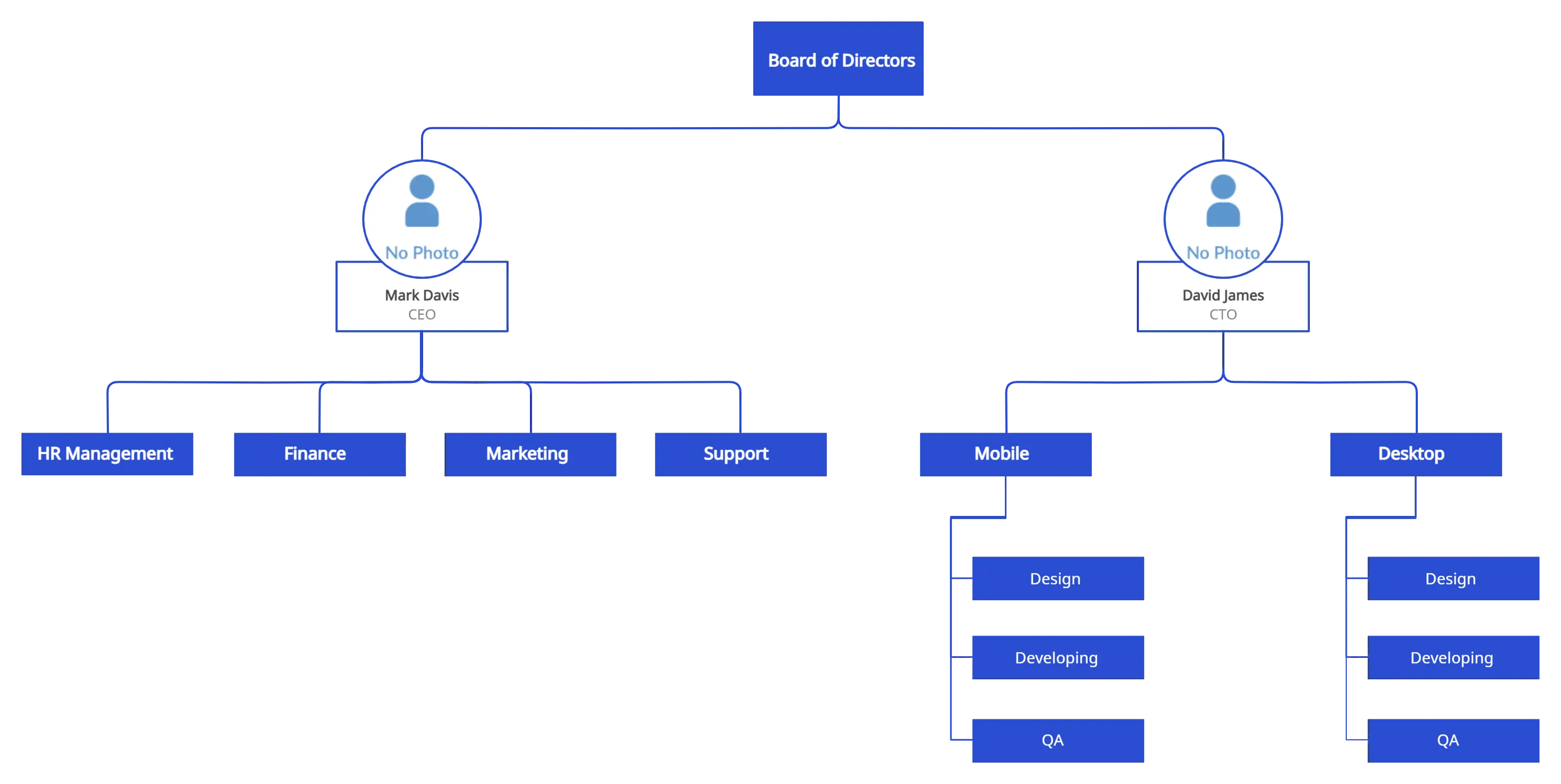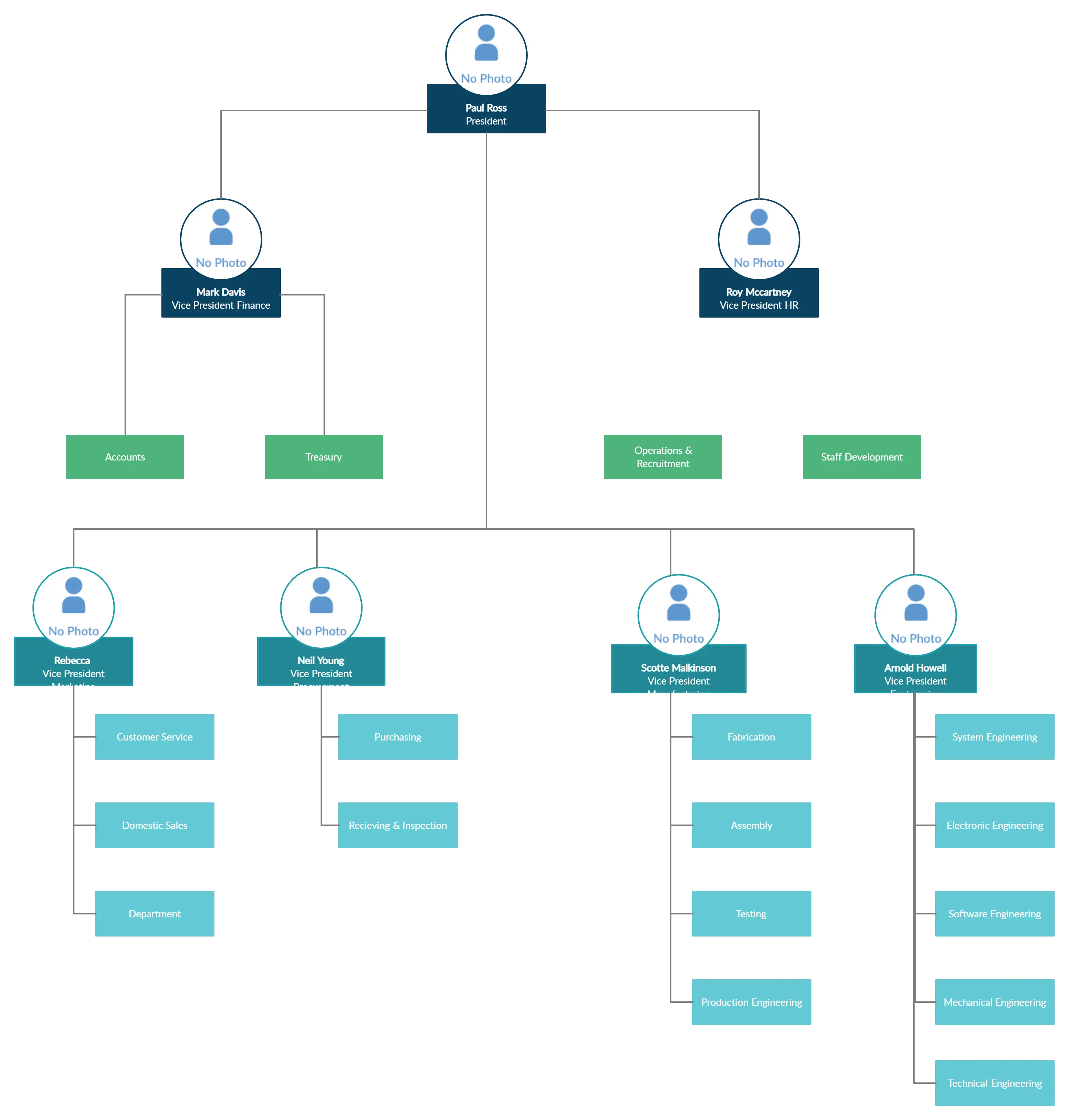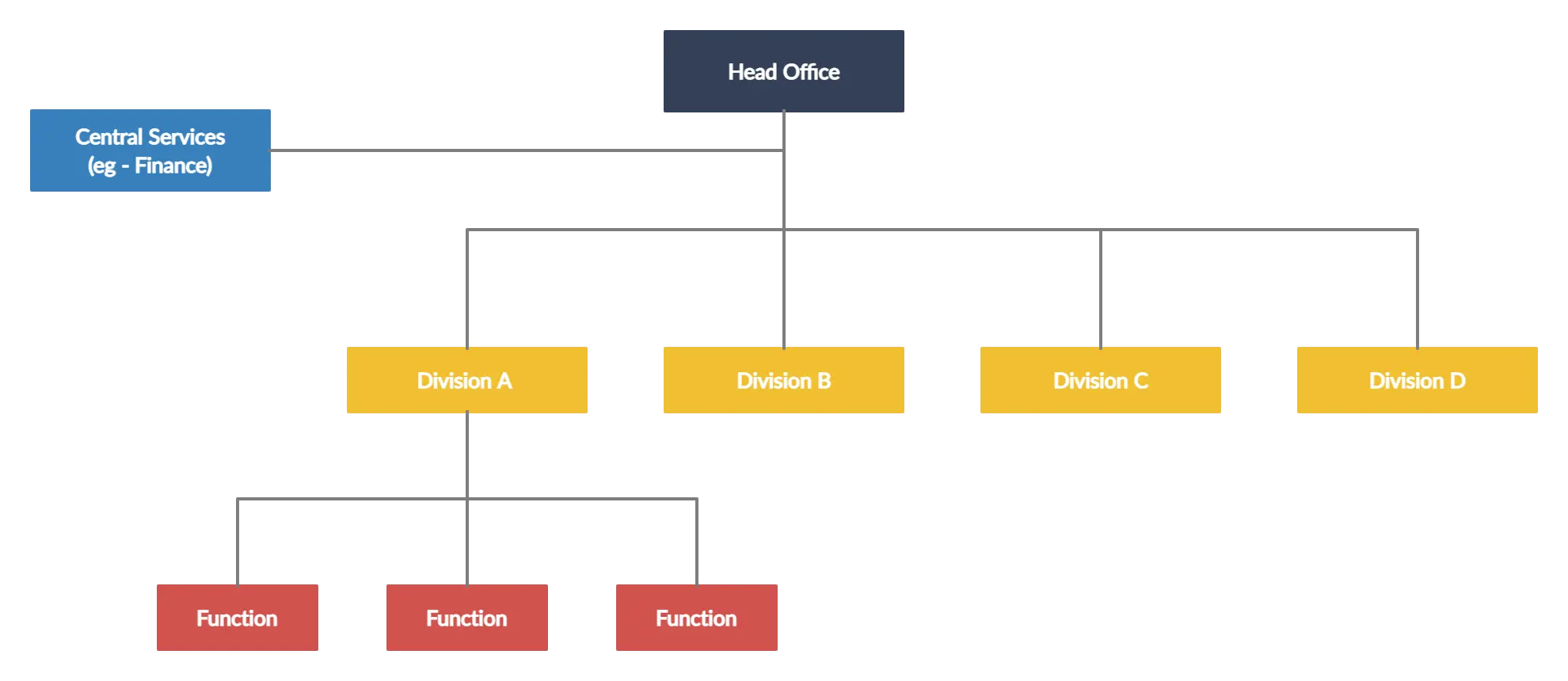Perhaps the most important resource of an organization is its people. So the role people play, how they interact through formal and informal processes and the relationships that they build are crucial to the success of any strategy. If your manager was asked to describe your organization, he would probably respond by drawing an org chart, to map out its structure.
But why does an organization need a structure? This is important because it gives a clear picture of the reporting lines and helps you understand who you should report to. Also, by having clear reporting lines it makes it easy for you to have more control over the resources. Organization structure is more like the backbone of an organization’s culture, it therefore can directly affect employee behaviour, performance and motivation. Therefore, having a structure in your organization is important rather than leaving it carelessly managed with no clear structure.
Organization Structure Types
Having an effective organizational structure in place can increase productivity, improve operating costs and employee satisfaction. This will allow you to identify the positions within an organization, determine who manages which departments and define individual job levels and roles in the organization. Lets go through some of the basic structural types. This will help you understand how each organization structure fits in to the business environment and the strengths and weaknesses of each structure.
The Simple Structure
This is no formal structure at all, just typical of an organization run by the personal control of an individual. It is commonly the way in which very small businesses operate. There may be an owner who undertakes most of the responsibilities of management, perhaps with a partner or an assistant. However, there is little division of responsibility, and probably little clear definition of who is responsible for what if there is more than one person involved.
The main problem here is that the organization can operate effectively only up to a certain size, beyond which it becomes too cumbersome and time consuming for one person to control alone.

The Functional Structure
This is typically found in companies with narrow, rather than diverse, product ranges. It allows greater operational control at a senior level; and linked to this is the clear definition of roles and tasks. For instance, the marketing department would be staffed only with marketers responsible for the marketing of the company’s products.
This specialization leads to operational efficiencies where employees become specialists within their own realm of expertise. It’s best suited for organizations producing standardized goods and services at large volumes and low cost. The most typical problem with this structure is however that communication within the company can be rather rigid, making the organization slow and inflexible. Therefore, functional structures may be considered most effective for organizations operating in rather stable environments.

The Multidivisional Structure
Divisionalization is considered as a solution to overcome the problems that functional structures have in dealing with responsibility and business diversity. Divisionalization allows a tailoring of the product strategy to the requirements of each separate division and can improve the ownership of the strategy by divisional staff.
Unlike the functional organizational structure, this focuses on a higher degree of specialization within a specific division, so that divisions are given the resources and autonomy, to react to changes in their specific business environment. Therefore, each division often has all the necessary resources and functions within it to satisfy the demands put on the division. In practice, however a multidivisional structure has problems, like conflict between departments which is common due to internal competition and differences in values and expectations. It’s also more expensive to operate and manage because each division is considered its own entity and some functions are duplicated.

How to Organize a Company Structure – Share Your Thoughts and Approach
Although it can be hard to determine when your current organizational structure isn’t working, especially if you do not have a high-level view of the structure, effort should be made to identify if your business has grown beyond its current structure or organizational design. When the structure isn’t working it leads to inefficiencies and wastage as well as possible internal conflicts. If you identify these sorts of problems it may be time to rethink your structure and move toward a better company structure.
Having looked at a few organization structures today, watch this space for more on how to organize a company structure. In the meantime, please do let us know if you have any questions/suggestions, we are more than happy to help you.
More Organizational Structure Examples
- Finance Department Structure
- Executive Branch Structure
- Airline Business Structure
- Bank Organizational Structure
- IT Organizational Structure
- Communities Organizational Structure
- University Organizational Chart
- Small Business Organization Structure
- Hotel Management Structure
- Dealership Organizational Structure
- Hospital Organizational Structure
FAQs About Mapping out Org Chart
What factors should be considered when mapping out the organizational structure?
The organizational structure should reflect the strategic direction and goals of the company.
Consider the size of the organization, including the number of employees, departments, and geographical locations.
Understand the nature of the work performed within the organization. Determine the key functions, processes, and tasks involved.
Consider how communication and collaboration should flow within the organization.
Determine whether decision-making is centralized or decentralized, and consider the level of autonomy and responsibility given to different individuals or teams.
Consider the organization’s need for flexibility and adaptability in a rapidly changing environment.
Ensure the structure allows for the effective utilization of talent and fosters career development opportunities.
Ensure the structure supports the desired culture and promotes values such as collaboration, innovation, accountability, or customer focus.
Ensure the structure can accommodate potential expansion, acquisitions, or diversification of operations without significant disruptions.
Ensure the structure complies with these requirements and facilitates appropriate reporting and governance.
What are the benefits of mapping out the organization structure?
A well-defined organization structure provides clarity regarding reporting lines, roles, and responsibilities within the company.
Mapping out the organization structure helps identify the most effective and efficient workflow within the company.
A clear organizational structure facilitates communication at all levels of the company.
A flexible structure helps in avoiding bottlenecks and ensures efficient resource allocation.
It creates a framework that aligns with the company’s culture and encourages employees to embody those values in their work.
what are the common mistakes to be avoided when mapping out the organizational structure?
Avoid adding unnecessary layers, departments, or reporting lines. Strive for simplicity, clarity, and a structure that aligns with the organization’s needs.
Neglecting to consider communication and collaboration channels can hinder information flow and coordination.
Failing to design a structure that can adapt to changing circumstances can limit the organization’s ability to respond to market shifts or growth opportunities.
Excluding employees from the process of designing the structure can lead to resistance and disengagement.
Ignoring the company’s culture and values when designing the structure can create a disconnect and hinder employee morale.





